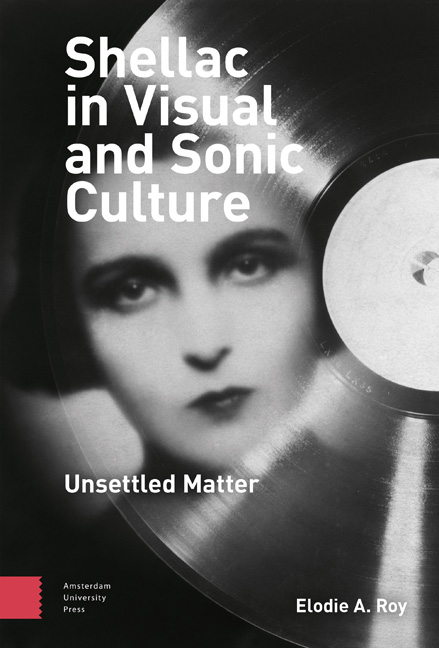Book contents
- Frontmatter
- Contents
- List of illustrations
- Acknowledgements
- Introduction: From material culture to the materials of culture
- 1 Sheen: Early stories and circulation of shellac
- 2 Crackle: Assembling the record
- 3 Mirrors: Phono-fetishism and intersensory visions
- 4 Detonations: Shellac at war
- 5 Shards: Waste, obsolescence, and contemporary remediations
- Conclusion: Sonic sculptures
- Bibliography
- Index
4 - Detonations: Shellac at war
Published online by Cambridge University Press: 17 February 2024
- Frontmatter
- Contents
- List of illustrations
- Acknowledgements
- Introduction: From material culture to the materials of culture
- 1 Sheen: Early stories and circulation of shellac
- 2 Crackle: Assembling the record
- 3 Mirrors: Phono-fetishism and intersensory visions
- 4 Detonations: Shellac at war
- 5 Shards: Waste, obsolescence, and contemporary remediations
- Conclusion: Sonic sculptures
- Bibliography
- Index
Summary
Abstract:
Chapter 4 attends to the toxic transformation of shellac in the two World Wars, when it became a key substance in the manufacture of detonating compositions, hand grenades, and bombs and was rationed by governments (thus curtailing record-making operations and intensifying research into substitutes, including PVC). Drawing from Catherine Malabou's radical theses on ‘destructive plasticity’, it theorises the material and ideological instability of shellac as well as its recycling, exploring the dominant discourses associated with recorded sound. In particular, it draws attention to the trope of phonographic listening as a means to repair both individual and social bodies broken down by war, showing how this discourse was recuperated by governmental bodies.
Keywords: war, phonography, plasticity, toxicity, vinyl, shellac
During the two World Wars, shellac was governmentally rationed, stockpiled and repurposed as a strategical material by the War Authorities, serving as ‘a protective or waterproofing varnish on the exterior or interior of numerous stores; as an adhesive on paper and textile discs in fuses, shells, etc., and for the attachment of labels on packages; as a binding agent for certain detonating compositions and for ignition compositions in pyrotechnic stores; as an ingredient of special varnish for marking TNT exploders, and of Kieselguhr varnish for coating the inside of pyrotechnic cylinders; and as a means of securing roller pins and pallet fans in watches’. Drawing from archival sources and secondary literature, this chapter examines the liquidation of shellac during the two World Wars when global supply chains as well as patterns of record manufacturing were disrupted, altered and progressively dismantled. Shellac shortages were contributing factors to the research into alternative synthetic materials such as vinylite (which became the basis for long-playing records). As it was progressively integrated within the wider ecology of war, shellac – a nontoxic substance – became a hazardous material by association. In the meantime, phonographic listening was also instrumentalised and ideologically repurposed both on the home front and in conflict zones – while the war generated novel and ambiguous sites for recording experimentations (notably in the context of German prisoner-of-war camps).
- Type
- Chapter
- Information
- Shellac in Visual and Sonic CultureUnsettled Matter, pp. 139 - 168Publisher: Amsterdam University PressPrint publication year: 2023



